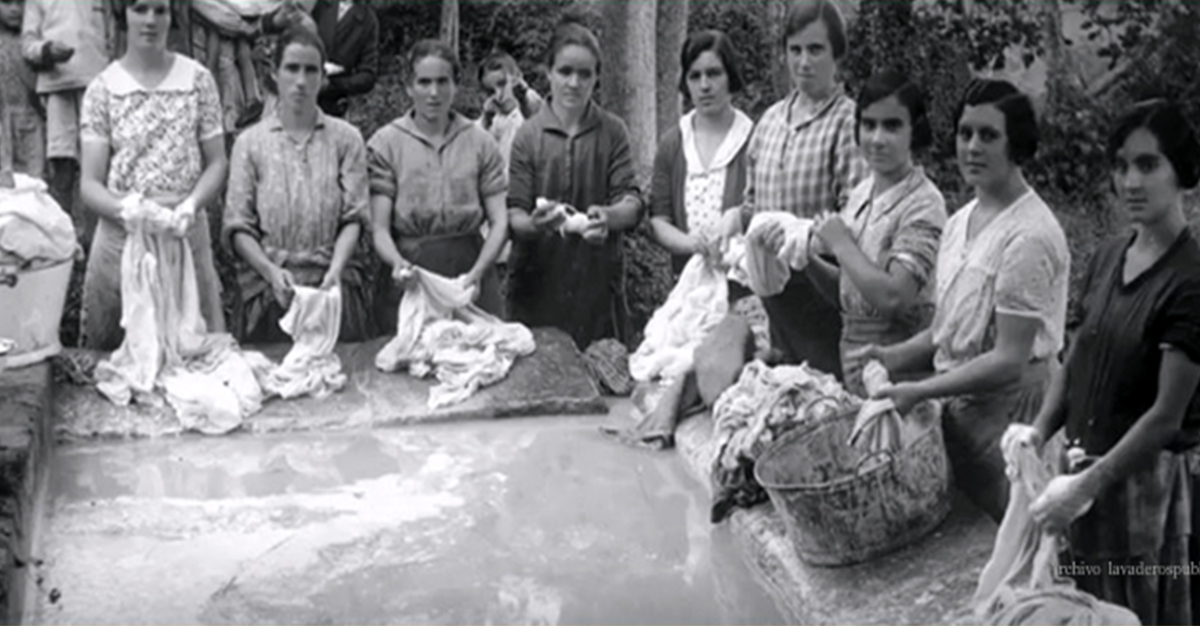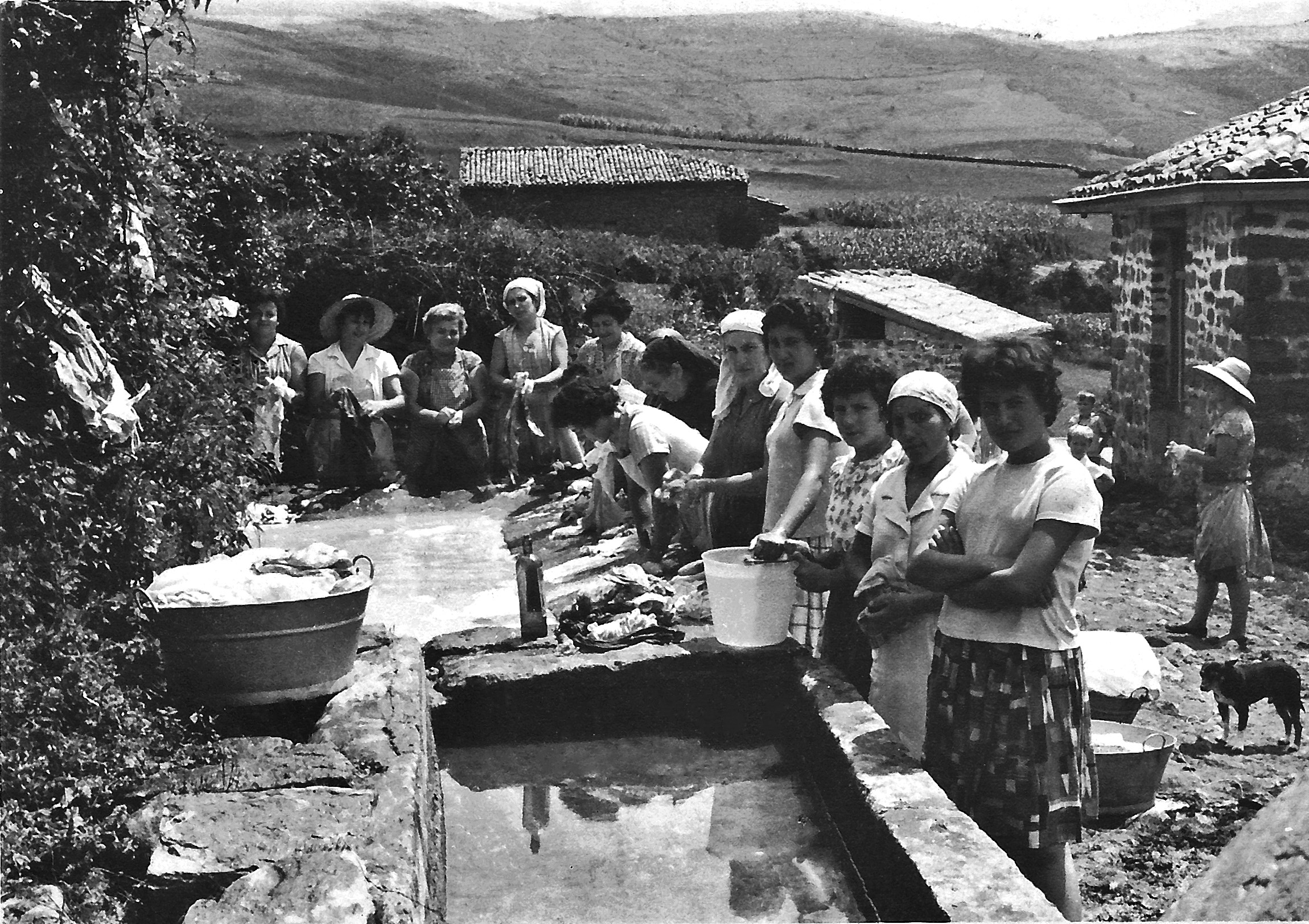Archives
The question of why would a space be built exclusively for women to wash clothes is not easy to answer, nor is it as simple as saying that the aim was to implement hygienic measures, in accordance with the new times. What is more, our villages featured almost no facilities for the common good, except for a small trough, a fountain, or a council house. Is it not truly remarkable that councilmen would decide on the construction of a washhouse so as to improve, one assumes, the working conditions of women? Because the task of doing laundry fell on women, as we all know. Indeed, before washhouses emerged, they would carry the bulky loads of dirty household linen and clothing on their heads to be washed at rivers and streams, in cold water and at usually shady places, soaping and scrubbing them on some smooth rock, bending their backs to nearly kiss the water.
The washing machine has been widely believed by housewives to be the most important invention of all devices meant to improve the quality of life in households. Until washing machines emerged and its use spread, things were very different. (more…)




